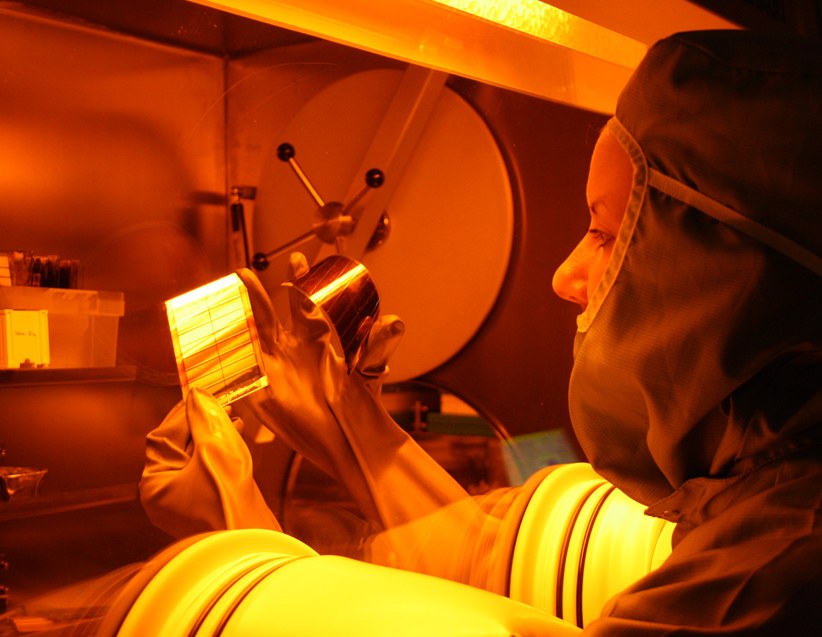Smart Printing: Fraunhofer IAP Develops Power Generating Films and Luminescent Glass
New inks for inkjet printers make it possible to print organic displays or solar cells on film and glass for the use in architecture, the textile industry and many other industries.
They turn light into electricity or vice versa: the inkjet inks developed by researchers at the Fraunhofer IAP can be printed on solid substrates as well as on flexible foils. In effect, solar cells and organic displays can be produced fast and cost-effectively.
Together with research partners, the Fraunhofer scientists have developed methods to print organic photovoltaic elements for use in architecture and for the textile industry on film.
Printed displays rolled up?
Also for displays, printing processes are utilized at the Fraunhofer IAP. Using specially developed inks from organic light sources and quantum dots, the researchers print, for example, organic light-emitting diodes (OLEDs) and quantum dot-based LEDs (QLEDs). The displays can also be printed on different materials. Printing on film makes them flexible to some degree. "Until we can flexibly roll up our televisions, we still have a little research to do", explains Dr. Armin Wedel, head of the research division Functional Polymer Systems at the Fraunhofer IAP. "Although there are already curved and even scrollable displays, they still have to be rolled up on rigid rolls with a defined diameter," says the OLED specialist.
ESJET printing for high-resolution OLEDs
New perspectives for the production of printed displays result from the use of ESJET printing (electrostatic printing). The scientists at the Fraunhofer IAP are working on this procedure together with twelve other partners within the project Hi-Response, which is funded by the European Union.
The ESJET printing process allows the use of a wider range of inks, as even very viscous inks can be processed. The drop-on-demand system also makes it possible to set the thickness of the printed layer very precisely. The printed structures can be as small as 1 micron. In the future, the printing of high-resolution, active-matrix-driven OLEDs should be possible.
Quantum materials for the display industry
In addition to OLEDs, the IAP scientists are also researching QLEDs based on indium phosphide quantum dots. They are free of conventionally used toxic cadmium. The results so far are groundbreaking for the industry. Indium phosphide-based QLEDs are gradually catching up on the performance advantage of cadmium-based systems in many areas. Regarding luminance, they are already outperforming cadmium-based QLEDs.

